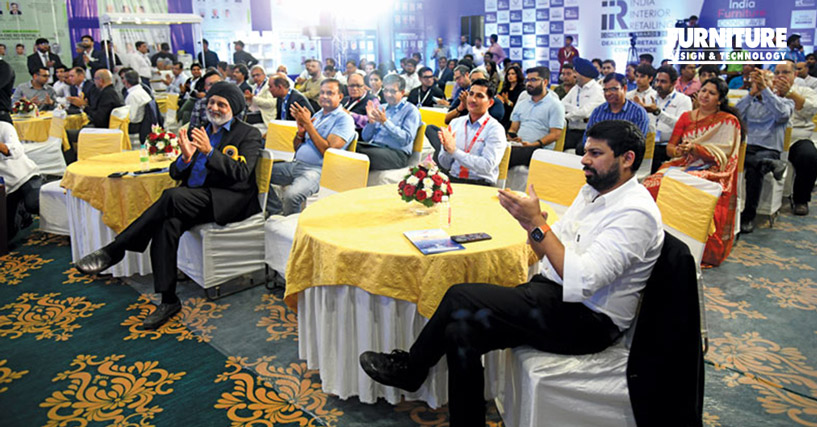
Mr. Dvivedi engaged in a thought-provoking dialogue with Mr. Bhartia to uncover the fascinating journey of furniture design in India. The discussion delved into the changing dynamics of consumer preferences in both metropolitan and tier 2 cities. Clarifying how scalability is managed while accommodating diverse consumer tastes, Mr. Bhartia emphasized, “We are catering to consumers in both bustling metropolitan and emerging tier 2 cities. Our consumer base is extraordinarily diverse, encompassing a vast range of preferences. We primarily manufacture sofas, catering to consumers who can’t engage an architect or interior designer for their home furnishings - typically those with a monthly income below INR 1 lakh. Our primary focus is on the middle consumers.”

Expanding on the consumer mindset, particularly those at the bottom of the pyramid, Mr. Bhartia added, “When we discuss the bottom of the pyramid, we find that they aren’t the primary consumers of furniture in India today. Surprisingly, approximately 40 per cent of India’s population still doesn’t use furniture. This underscores a vast, untapped market. Among the 50 per cent of the population that does utilize furniture; the lower 30 per cent opt for very basic furnishings. In contrast, the top 2 per cent are high-end clients, with an additional 5-6 per cent representing the middle segment. The consumers we primarily serve constitute only 10-15 per cent of the market. This implies that there is a significant untapped market in India, ready for exploration.”
The exchange of ideas between Mr. Dvivedi and Mr. Markose brought to light the complexities of India’s burgeoning economy. As the nation’s financial prowess grows, consumer demographics are shifting. A growing middle class stands as a powerful force in the market, demanding products that range from middle-class affordability to those suited for the upper middle class. This trend is emblematic of India’s ascent to the upper echelons of the global economy, promising even more intricate consumer dynamics in the future. Mr. Markose confirmed, “We know the Indian economy is booming, growing, so we are hearing a lot about it. We are getting to become one of the largest economies in the world.”
According to Mr. Timbadia, their major audience is HNIs, architects and interior designers, and real estate developers. Describing the diverse preferences of Indian consumers, from luxury-centric metros to aspirational Tier II cities reflecting a dynamic shift in the markets design priorities, he added, “Earlier, urban centers leaned towards established brands. However, today, metropolises are increasingly prioritizing design-centric products and similar concepts. In contrast, Tier II cities currently find themselves in a position that urban centers occupied perhaps six or seven years ago. This situation is marked by a stronger inclination towards aspirational purchases and a focus on brands in their own right. Consequently, these Tier II cities are investing in this direction, while even the metropolitan areas have moved beyond the notion that a brand is the exclusive means to enhance one’s home.”
Mr. Bhartia further added valuable insights, highlighting the consistent ratio of high-end consumers in various cities. “In every city, the ratio of high-end consumers remains consistent, regardless of population size. For instance, in a metro with a population of one crore, one per cent equals one lakh consumers. In a smaller city with a population of 10 lakh, one per cent is equivalent to 10,000 consumers. While the ratios are similar, the concentration of high net worth individuals is naturally higher in metros due to their larger populations. Additionally, individuals from smaller cities often travel to metros for their purchases, further contributing to the sales in metropolitan areas.”
This article is a part of our exclusive article ‘Consumers Mindset of Metros & Tier 2 Cities’ which is originally published in Furniture Design & Technology (FDT Magazine) November 2023 print issue. If you want to read the full article, please subscribe Furniture Design & Technology Magazine here:
Furniture Design India and the magazine FURNITURE DESIGN & TECHNOLOGY (FDT magazine) are from the trusted 22-year-old media house of SURFACES REPORTER and PLY REPORTER.
FDT is a B2B monthly bilingual magazine from India that shares the pulse of the furniture business in India and connects the manufacturers, OEMS, product designers, architects, showrooms, designers and dealers.
Read More© 2025 Furniture Design and Technologies.. All Rights Reserved. Developed by eyeQ Advertising